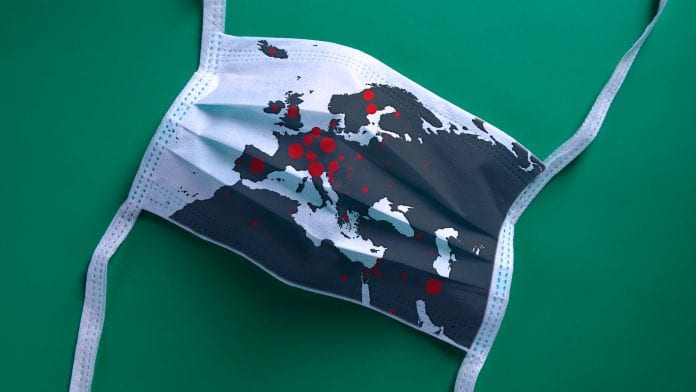RIO DE JANEIRO, BRAZIL – In mid-September, when its summer was coming to an end, Europe began to register an increase in the number of new daily Covid-19 cases.

This increase intensified dramatically in October. To contain the rapid resurgence of the virus and to prevent the overburden of healthcare systems, several countries decided to implement more restrictive measures.
Some of them, like England, actually implemented a new lockdown. Others, like Greece, established partial lockdowns or curfews, in the case of Austria.
However, this time authorities are favoring keeping schools and some economic activities open. The opposite scenario is found in Brazil.
After a long plateau of new cases and deaths, Brazil succeeded in slowing the transmission rate and reducing curves. However, it is critical to analyze what is happening in Europe now, to learn from its mistakes and copy its achievements in order to prevent this rebound effect from happening here too.
It is believed that the acceleration of the pandemic in the Old Continent has been helped by the relaxation of containment measures, free flow of people during the summer, and by youths, who are currently the most affected group.
The trouble is that they can transmit the virus to high-risk groups, including the elderly and people with preexisting conditions. A new strain of the virus, which originated in Spain, is also associated with the recent spread of the disease.
Numerous mutations of the novel coronavirus have already been identified, but few have been as widespread as a new mutation called 20A.EU1.
According to a study by ETH Zurich University and the University of Basel, both in Switzerland, four out of every five new Covid-19 cases in the United Kingdom have occurred as a result of this mutation. It has now been found in 12 countries in Europe, plus Hong Kong and New Zealand.
After the curves were reduced to very low levels due to highly restrictive lockdowns, many European countries abolished the wearing of masks – or at least did not enforce it – and relaxed the physical distancing requirements.
Borders between countries were opened and people began to travel freely. Salmo Raskin, director of Genetika, a counseling center and genetics laboratory in Curitiba, points out:
“At the start of summer, all borders within Europe were opened. Spain is a destination in great demand in the region, from the tourism perspective, and it was precisely there that this mutation arose, which spread to all parts of Europe due to the great flow of tourists.
“For now there is no evidence that it can cause a lighter or worse disease than the original strain, but it shows that the opening of borders is something much more complex than we imagined”, says the geneticist
Young people will naturally crowd in restaurants, bars, parties and beaches. This virtually complete reopening allowed the virus to find a large number of people capable of spreading it, leading to an increased rate of community transmission.
“We have to understand that not everything can go back to normal, otherwise what happened there will happen here. We can’t open the borders completely, otherwise this new strain may come here. We need to take action now, mainly by increasing testing and tracking contacts,” says the expert.
Maintaining measures such as hand hygiene, avoiding crowds and constant wearing of masks are crucial to reducing the risk of an increase in cases here.
Despite the weather working in our favor – as we enter the summer, Europe is entering winter, a favorable season for the spread of respiratory viruses – it is critical to redouble care during the holiday season. The virus spreads from person to person and the more people close to us, the greater the risk. Closed environments raise the risk of transmission, but this does not mean that open places, such as crowded beaches, are safe.
Source: Veja

